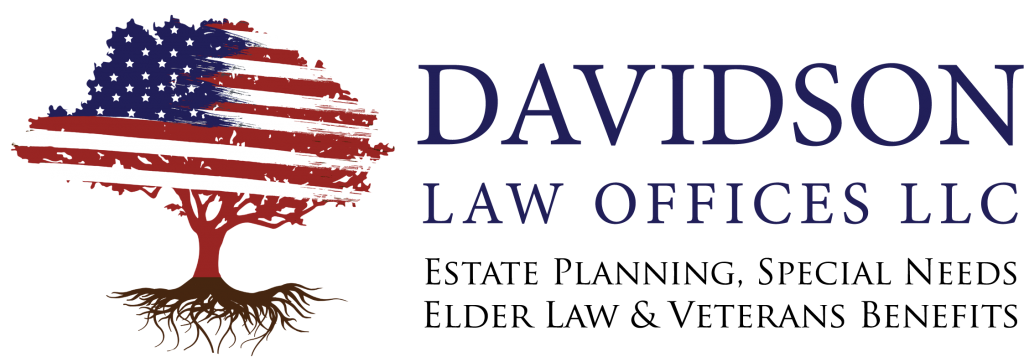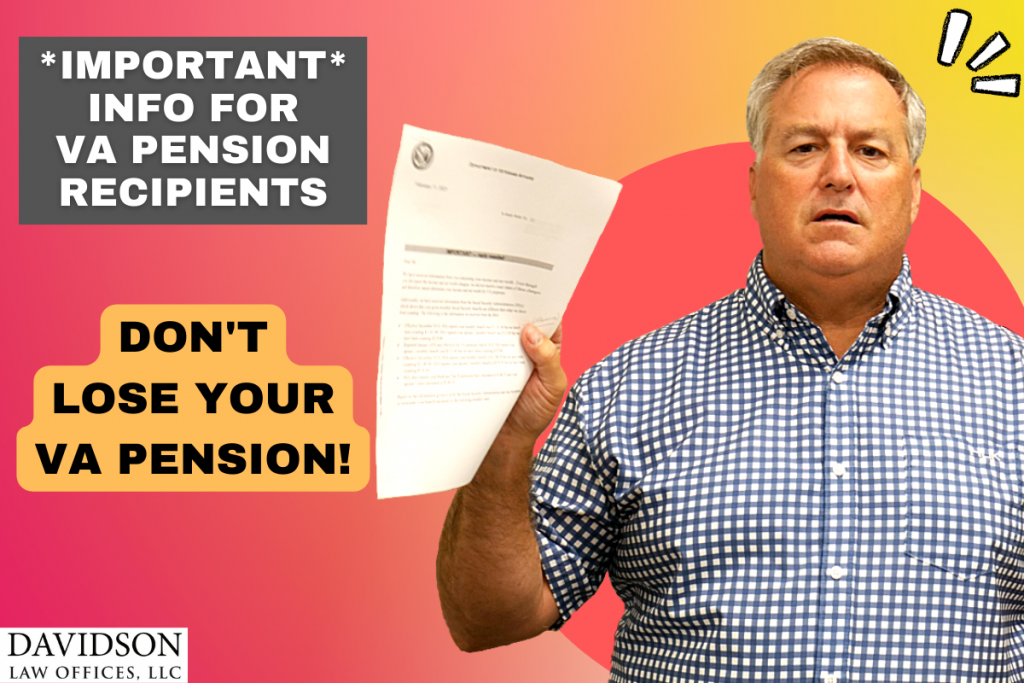Did you know that you can lose your VA Aid and Attendance (aka VA pension) award after receiving benefits for several years? Did you know that you could also owe the VA significant sums of money if you do lose your pension? It’s true. We see it happen all the time as a result of not tracking unreimbursed medical expenses, selling your home, and more. But there are things you can do to make sure this doesn’t happen to you!
The loss of a VA pension usually happens 1-2 years or more after being awarded. You’ll first get a letter from the VA stating that your pension award is going to decrease. Later you’ll get another letter from the VA saying that they need additional documentation regarding your income and expenses. And then finally, you’ll get the dreaded letter saying you owe a significant amount of money because your pension award has been taken from you.
Qualifications for VA Aid and Attendance
So how do you prevent this from happening? Well let’s first revisit the qualifications for VA Aid and Attendance or VA pension.
#1 You need to have served during an eligible wartime period. Those periods include WWII, Korea, and Vietnam. And there are certain dates during the Vietnam War where you needed to be “in country” to qualify.
#2 You have to be honorably discharged from your service. You can’t be dishonorably discharged. Medical discharges are good to go.
#3 You have to need assistance with the activities of daily living. This one can be a little complicated. To qualify for VA Aid and Attendance, you must require assistance with two of the five items listed below.
#4 You must pass the income and asset test.
Activities of Daily Living
Can you prepare your own meals and feed yourself? This doesn’t include just putting a TV dinner in the microwave or heating a can of soup. This includes planning a meal, going to the grocery store, getting the groceries, going back home, putting up the groceries, prepping the meal, cooking the meal, cleaning after the meal, etc. If you need help with any of these tasks, then the VA considers you to be need of assistance with meals.
Do you need assistance with bathing or tending to your personal hygiene? Do you need grab bars in your bathtub or shower? Do you require a shower seat for bathing? All of these would qualify as an activity of daily living for which you need assistance.
Are you legally blind?
Do you need nursing home care?
Do you need medication management? For example, can you unscrew the childproof tops on your medicine bottles? If you have arthritis, you may not be able to do that. That means you need assistance with medication management.
Do you need help with your finances?
The VA Income and Asset Test
The fourth qualification for VA Aid and Attendance involves your income and assets. Your income for VA purposes includes your income and your spouse’s income. That’s your total household income. From that total household income, the VA allows you to deduct unreimbursed medical expenses which include Medicare Part B and supplemental health insurance policies. Once those unreimbursed medical expenses are deducted from your total household income, we then arrive at your “income for VA purposes.”
We’ll use an example here to clarify this further. Let’s say that your total household income is $1,850 a month. From that income, you and your wife each pay $170.50 per month for Medicare Part B. You also have a supplemental insurance policy for you and your wife that costs $450 each month. That means that your unreimbursed medical expenses are $791 per month.
We then deduct those unreimbursed medical expenses from your total household income of $1,850 per month. After that deduction, your household income for VA purposes is $1,059 per month. These unreimbursed medical expenses are very important because every dollar of income you have will reduce your potential VA benefit. So the the lower we can claim your household income to be, the more VA benefit you will receive.
For a married with spouse Veteran, the maximum annual VA Aid and Attendance benefit is $29,175, paid monthly in 12 installments of $2,431. That money is income tax-free. If we take that $2,431 per month of maximum VA benefit and deduct your household income calculated above ($1,059), we arrive at a monthly benefit of $1,372 per month. That would be the VA benefit you’d receive in this case.
Unreimbursed Medical Expenses
It’s our job to help you qualify for the maximum VA benefit you can receive. When we’re helping someone apply for VA Aid and Attendance, we’re carefully planning unreimbursed medical expenses. Those expenses will reduce income for VA purposes and increase your overall VA benefit. The VA doesn’t really care about your daily cost of living expenses, but they do want to know about these unreimbursed medical expenses. That’s where we can help as far as planning goes.
The number one reason people lose their VA Aid and Attendance is because they forget to monitor and track their unreimbursed medical expenses. We take a lot of time coaching our clients to keep track of these expenses. We want them to understand that these unreimbursed medical expenses will apply against your household income and help you to maximize your VA pension benefit. Even if you’ve been awarded VA Aid and Attendance benefits, you still have to continue tracking these unreimbursed medical expenses.
Other Ways to Lose a VA Pension
If you have a caretaker agreement, don’t stop funding that caretaker agreement. If you have a caretaker account, don’t close the account. Don’t listen to anyone who tells you that you don’t need to fund or keep those accounts because you’ve already been awarded. Don’t think that the VA won’t know about it, because they will!
Another reason people lose their VA Aid and Attendance is due to non-exempt assets. Your non-exempt assets for VA purposes cannot exceed a set amount. Currently that amount is approximately $138,000. Exempt assets include your house, vehicle, and a burial fund or life insurance policy for burial. That’s all the assets that are exempt according to the VA.
Any other assets you have are non-exempt and are counted towards that $138,000 maximum asset limit. Those non-exempt assets include IRAs, 401Ks, and bank accounts. So in order to qualify for VA pension benefits, we need to make sure that your non-exempt assets don’t exceed $138,000.
We frequently see older couples who sell their large house because they no longer need it. They sell the house and then move into a smaller house or a retirement facility. That creates a problem because you’ve now converted an exempt asset (the house) into a non-exempt asset (cash).
Let’s say that you sell your house for $250,000 and put that money in your checking account. You’re now way over the VA asset limit. The IRS will inform the VA that you sold your house and the VA will send you a letter saying that you no longer qualify for VA pension. The good news is that there are ways to protect and preserve the equity in your home.
Contact Us So We Can Help!
If you need assistance qualifying for VA Aid and Attendance, tracking unreimbursed medical expenses, or reducing your non-exempt assets, please complete this form or give us a call at (229) 226-8183. You can also send us an email to dearvaguy@gmail.com We’re here for you and your spouse and we’re very thankful for your service.
If you’d like to see this blog in video format, you can watch it below. Please be sure to SUBSCRIBE to our YouTube channel and click the bell notification button so that you’re notified each time we publish a new video.

